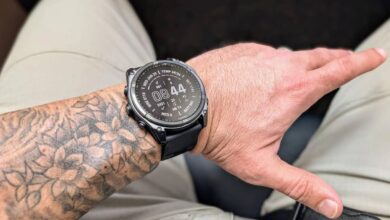Top 7 Best Smartwatches for Android Right Now – Tested and Reviewed!
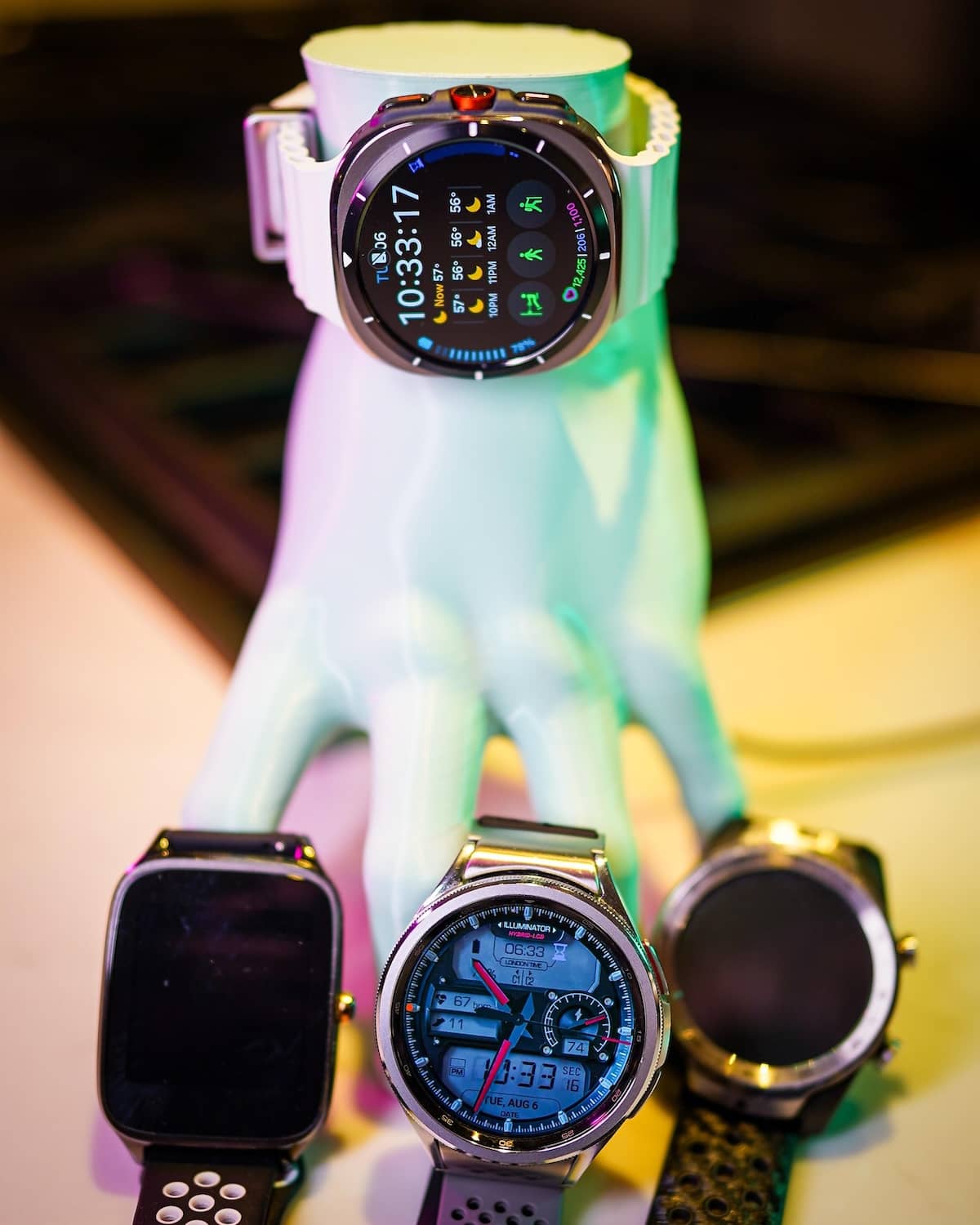
Tech-loving smartphone owners can’t get enough of their devices. From taking calls to texting, then playing a game or streaming a Spotify playlist—and obsessively checking for a reply to that just-sent text—phones have become our lifelines. Eager to enhance this already rich mobile user experience, device owners are making a push towards the world of wearables. A chic smartwatch is the coveted smartphone wingman of choice, operating with more intimacy, checking health and fitness metrics with optical sensors, and generally relegating phone usage to a snug back pocket.

Tempted to write up a few passages of text for the beginner mobile device owner, we’ve decided instead to get right into the reviews. Everyone owns a smartphone, and smartwatches aren’t that different, apart from their more intimate, bodily worn form factor, obviously. That skin-to-device connection opens the door to a smorgasbord of fitness and wellness tracking features. These so-called Biosensors create a holistic view of the human body, track workouts, monitor sleep patterns, and even measure how much stress your experiencing.
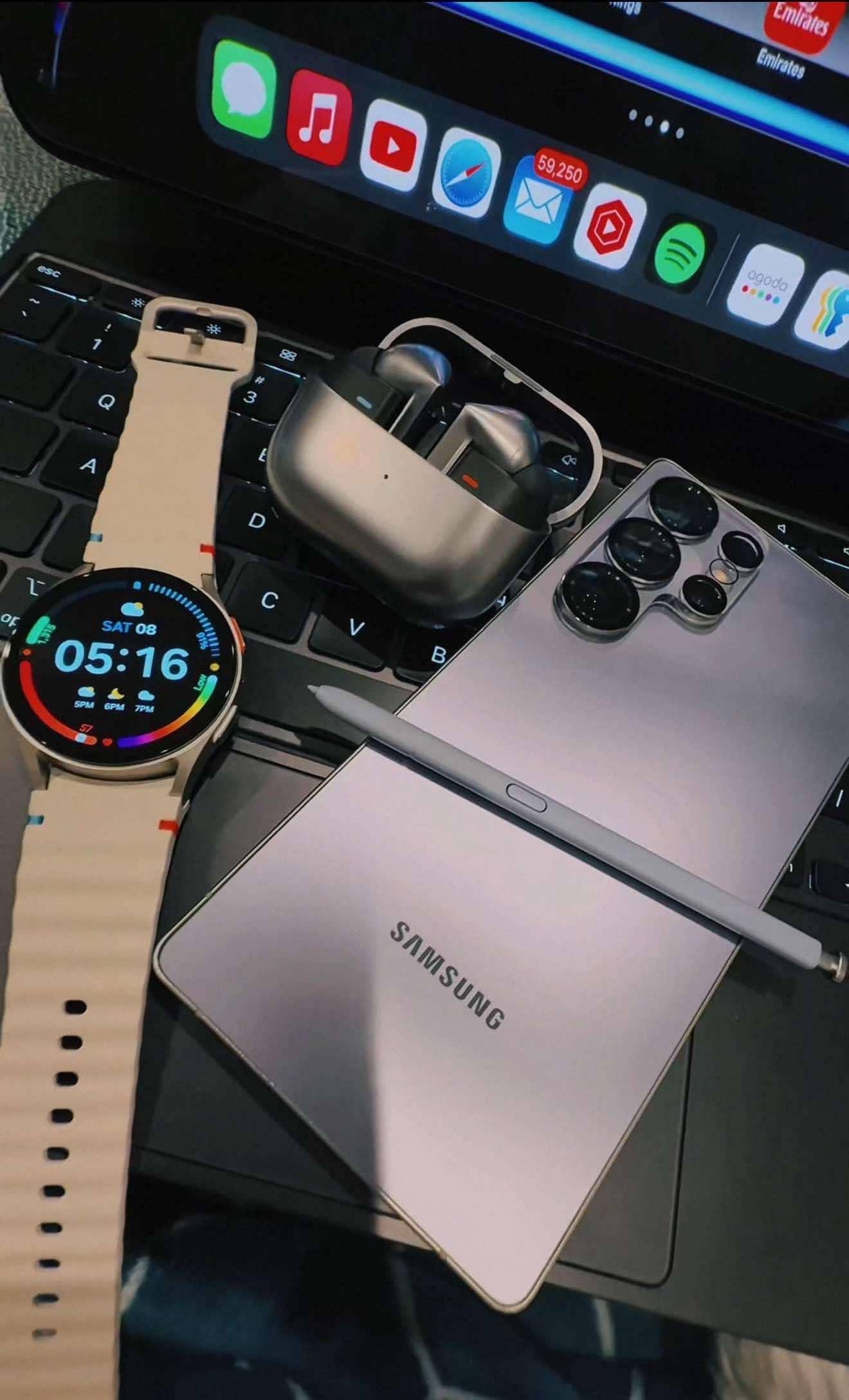
Our Top Picks Today – The 7 Best Smartwatches for Android
Samsung Galaxy Watch Ultra Smartwatch
Here’s the lowdown on the Samsung Galaxy Watch Ultra. It’s a smartwatch with traditional stylings, so we were almost surprised when an old-fashioned analog display didn’t appear when we flipped up the review model our staffer had just strapped onto his wrist. It features a 480×480 Super AMOLED display, so the multiple downloadable watch faces looked almost like the real thing on the 16 million color screen. Scratches would spoil this pristine aesthetic, but with Sapphire Crystal Glass providing protection, we were able to exercise and hike with wild abandon, never worrying about scrapes.
The smart timepiece only comes in a big 47mm build, which was excellent for displaying dual-band GPS maps on a larger screen, but it’s going to look a little chunky on slender wrists. Speaking of GPS, dual band satellite connectivity defied obscuring cliffs and narrow valleys, calling up detailed maps even when tall buildings tried to confound its turn-by-turn directions. Switching to the Biosensor, under a powerhouse Galaxy AI enhanced processor, ECG and SpO2 monitoring was precisely tracked by next-gen sensor technology, combining with sleep tracking data to create an Energy Score on the Samsung Health App.
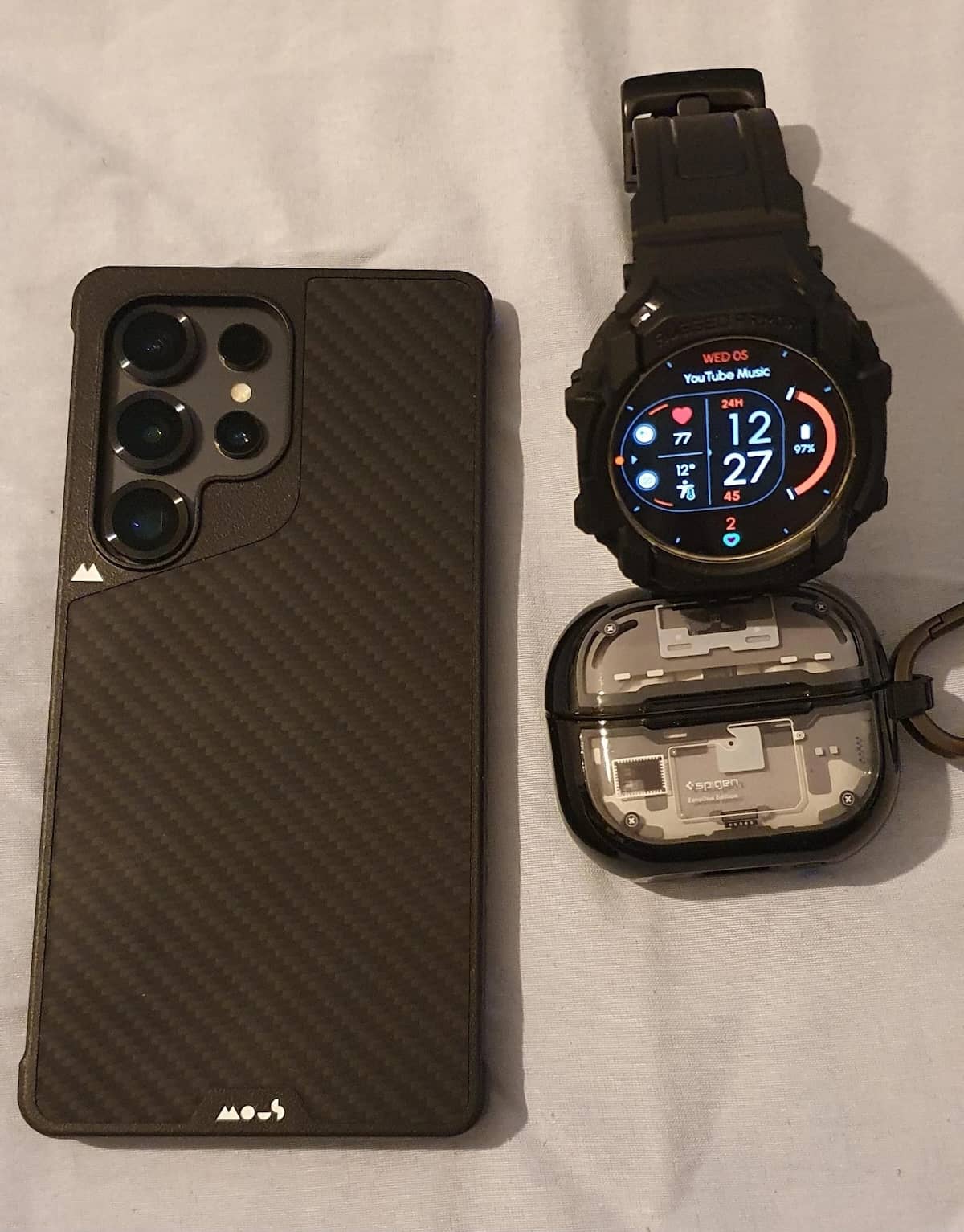
Expect the full range of Android smartwatch connectivity options, including multiband 802.11 Wi-Fi, Bluetooth 5.3, and LTE cellular. Accelerometer and gyroscope fitness tracking is also onboard, delivering dozens of workout and outdoorsman quality activity options, and 10ATM water resistance is swimmer-approved, monitoring and storing your swim stroke stamina as you do pool laps.
OnePlus Watch 2 Smartwatch
Sporting Wear OS app compatibility, the OnePlus Watch 2 is most definitely a member of the Android smartwatch family. It’s also one of the overachievers in our collection, using its Snapdragon W5 Gen 1 processor and wearable specific BES2700BP MCU as dual hardware engines. Finishing off this stellar combo, a crisp 466×466 high-resolution AMOLED display uses a 326 ppi pixel density to eliminate subpar map rendering. GPS is standard, as is Glonass, Galileo, and Beidou, keeping sat nav internationally accurate.

Android user perspective – One of our office workers has adopted a sports lifestyle, with the occasional adrenaline-fueled moment of danger occupying her weekends. We let her strap on the OnePlus Watch 2. It seamlessly switched from jogging to 5K running mode, displaying everything from calories burned to stride length. Estimations of VO2 Max (Oxygen capacity) and sleep breathing patterns were also available, generating more health data than a gym full of fitness trainers could match. Wi-Fi 802.11 and Bluetooth 5.0 took care of the rest, transmitting the data to the Ohealth app on her smartphone for further analysis, which was then rendered on easily read graphs and notifications.

Fitbit Sense 2 Smartwatch
Picking out the best smartwatch for Android users can be a subjective matter. Best for what? Is it a talented health monitor or a gym activity expert, gifted in the ways of monitoring any imaginable sport, badminton and horse riding included? We feel that the Fitbit Sense 2 straddles both markets, providing in-depth health metrics and a slew of activity tracking options. An ECG assessment app takes its feed from an advanced multi-path heart rate monitor. Then there’s a skin conductance feature as well, measuring perspiration and workout induced stress. Nothing is missed.
Hikes and athletic-level triathlons are also part of the smartwatches’ feature set, with SpO2 monitoring keeping tabs on wearer breathing while they conquer steep inclines. We were busy using our hands to navigate near vertical hillsides a few times, but the built-in microphone and speaker took our commands, calling up the correct Wear OS app in response. Even the physical form factor impressed us, the Corning Gorilla Glass 3 deflected scratches, leaving the 1.58 inch AMOLED display clear and easy to read. That reduced stress, the Fitbit Sense 2 detected the reduction in anxiety, and our sleep later that night was peaceful, as again monitored by this device.

If the Sense 2 isn’t the best smartwatch for Android wearable enthusiasts, it’s not because it lacks smart attributes. NFC is rolled into the hardware, making hands-free payments a breeze at the convenience store where we buy our favorite energy drink. Meanwhile, using Bluetooth, notifications were coming in from our smartphone informing us of a mindfulness exercise that would eliminate any residual stress, as measured by the skin measuring cEDA electrical skin conductance monitor. Ironically, the occasional false positive did cause some stress, but the overall performance of the sensor was satisfactory. We treat our staffers well, so stress isn’t an issue.
Although the smartwatch put two straps in the box, one large and one small, we bought the vegan leather band as a more comfort oriented substitute. If our reviewers were going to test this slender device while asleep they were going to be comfortable. Built in GPS completes the fully-loaded package of user targeted features. Mostly, the cEDA (Conductance-based ElectroDermal Activity) sensor and cardiopulmonary monitoring indicates a premium health and fitness Android wearable with built-in Alexa smarts. However, although Android compatible, it uses Fitbits’ proprietary OS, not Wear OS.
Google Pixel 3 Smartwatch
Meet the flagship Google designed wearable. This Google Pixel 3 smartwatch has a lot to prove, and we’re here to run it through every back-breaking test we can imagine. The 45mm watch was selected, our reviewer sent outdoors to visit gyms and campgrounds, and we awaited the results with much anticipation. With a 2000 nit display and 4G LTE delivering all notifications from our office, we didn’t feel one iota of doubt; this smart wearable was going to deliver the goods, informing us of staffer health on its large but svelte polished silver aluminum chassis.
At a 12.3mm depth, the case is thin, but it’s not quite as slender as some of the models we’ve tested. The 420mAh battery inside that case keeps the smartwatch powered up for 24 hours. It’s not an overly impressive figure, to be sure, but it can be extended to 36 hours when the device dips into low power mode. Still, it could be better. The Snapdragon W5 Gen 1 processor and Cortex-M33 chip crunching data under the bright AMOLED display are undoubtedly guilty of stealing the bulk of the power, the 320 ppi screen Actua Display hungrily working with the advanced ECG sensor and SpO2 monitor to prioritize power needs. As the battery charges to 50% of full power in only 24 minutes, though, we didn’t give the wearable a ding in its review scores.
Android user perspective – It would take too long to list all of the sensors. ECG and blood oxygen saturation are the headliners, followed by a cEDA skin conductance monitor, barometer, skin temperature sensor, and much more besides. GPS is well implemented in the form of standard GPS, Glonass, and Galileo. The latter navigation system is Europe’s answer to sat nav, while Glonass is, of course, Russian. Ultimately, we were covered every which way by reliable and tested mapping systems, all built into a resilient aluminum alloy shell, the display protected by Corning Gorilla Glass 5. It’s this build that ensures 5ATM water resistance, by the way.
A true wearable for every occasion, the Google Pixel 3 smartwatch has to rate as either the number one or two best smartwatch for Android wearable owners. Its fitness activity list is ridiculously well covered. Everything from run stride length to swim stroke types and lap coverage gets a mention. Connectivity, for further analysis on a smartphone, takes place via Bluetooth 5.3, 802.11 Wi-Fi, or 4G LTE. Growing tired of traffic noise during a run, we even paired our Pixel Buds 2, at one point taking delivery of a package back home via a Nest camera feed.
Mobvoi TicWatch Atlas Smartwatch
Every smartwatch review needs its rugged, super-resilient contributor. For that role, we’ve picked out the TicWatch Atlas, yet another Snapdragon W5 Gen 1 wearable, but this time backed by MIL-STD-810H durability. A Sapphire glass screen defeats scratches while stainless steel provides superior shock protection. There’s also a long life 628mAh battery buried under all of that military-grade toughness, keeping the watch active for 90 days on smart mode. An innovative dual display keeps charge stamina high, switching from normal 326 ppi AMOLED graphics vibrancy to a power conserving LCD like monochromatic display when energy levels become critically low.
Staffers with weekend warrior tendencies fell quickly in love with the TicWatch Atlas. Four GNSS satellite mapping systems were inbuilt. That’s GPS, Glonass, Galileo, and Beidou, for those interested in such things. Interestingly enough, and this isn’t common on smartwatches, QZSS Japanese-designed positioning accuracy is also built in, so wearers will never get lost, not unless they lose the TicWatch Atlas itself. As for sensory smarts, pick your bio monitor, the Atlas seems to have them all. Heart rate monitoring, SpO2 and skin temperature readouts, too, the watch tracks every popular health metric.
Android user perspective – It almost felt a shame to keep this wearable indoors. It does detect workouts, using what the designers call TicMotion, and 110+ workout modes are seamlessly available for gym rats to explore, but it’s the outdoor adventuring talents of the device that impressed our reviewers the most. The watch supports Bluetooth 5.2 and Wi-Fi, employs a barometer and compass when climbing unrecognizable hillscapes, and it packs 5ATM waterproofing. If there’s a cold lake beyond those hills, watch out, a brisk swim might be in order before setting up camp.
Back in the city, Wear OS compatibility had us navigating an entirely different kind of wilderness. Notifications of public transport alerts came in without any trouble. We paused at a deli to use NPC backed hands-free payment so that we could hydrate, then it was back to the office to write up the review. Work over, advanced sleep tracking spotted our reviewers’ snores and advised of tips needed to get a more restful night’s sleep, even though the 12.05mm deep case was a tad noticeable when dropping off.
As a quick by-the-way, the wearable makes the grade on our best smartwatch for Android users list—analyzing sensor data and workout stats—when supported by the Mobvoi phone app.
Amazfit Balance Smartwatch
If the previous wearable was our nominated rugged device du jour, the Amazfit Balance hits our review sweet spot in a different way. It’s thin, with a 46x46x10.6mm form factor ensuring a snag-free fit. If sleep tracking is going to be a game-changing feature, the 35g lightweight wearable deserves serious consideration. And that’s not all. The wrist worn device is packed to the rafters with desirable tech features, like a bright AMOLED display, a 475mAh battery, and both heart rate and blood oxygen saturation monitoring, courtesy of BioTracker 5 technology. Heavy usage fitness scenarios with all week operations were not a problem.

Android user perspective – Thin and light it might be, but the Amazfit Balance isn’t some weedy wearable that’s scared of outdoor activities. A tempered glass screen protects the 323 ppi AMOLED display, and the shock resilient case is made out of a tough aluminum alloy, which is rated for 5ATM water resistance activities. Think swimming or low diving board challenges. Wanting to get away from it all? Then dual-band GPS and offline maps would stop an outdoorsman with a love for technology from wandering away from mapped out hiking trails. Incidentally, the display never washed out when the sun was beating down.
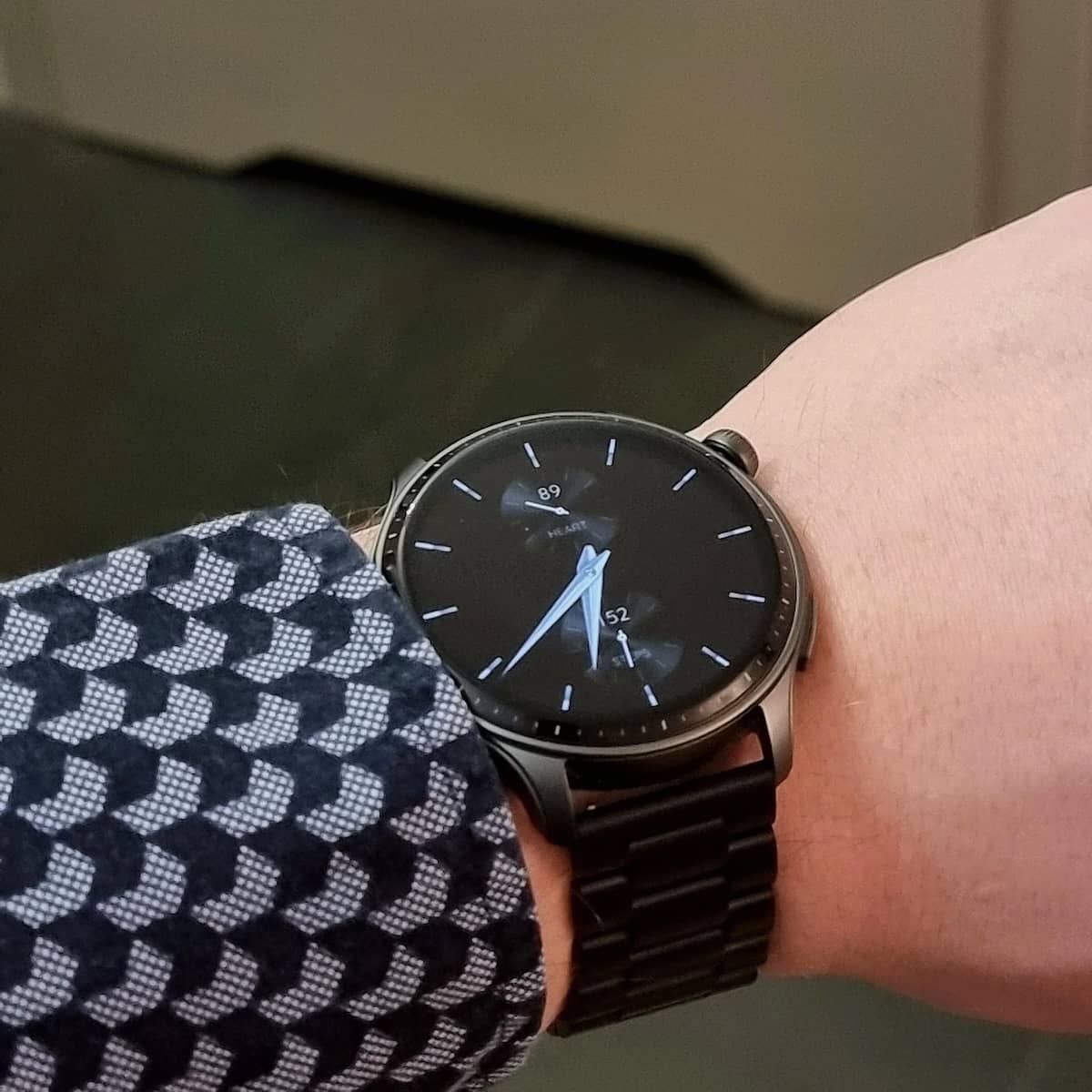
Samsung Galaxy Watch 7 Smartwatch
The Galaxy AI wearable makes a good bookending product, rocketing straight into the upper half of our best smartwatch for Android list. Of course, it’s not just here to make this review look aesthetically balanced. The Samsung Galaxy Watch 7 is one of the best ECG capable wearables we’ve tested. As this function requires electrodes, we asked an intern to carry out this duty. She had to lay her finger down in a relaxed position against the smartwatch crown, as this is where the device electrode was located.
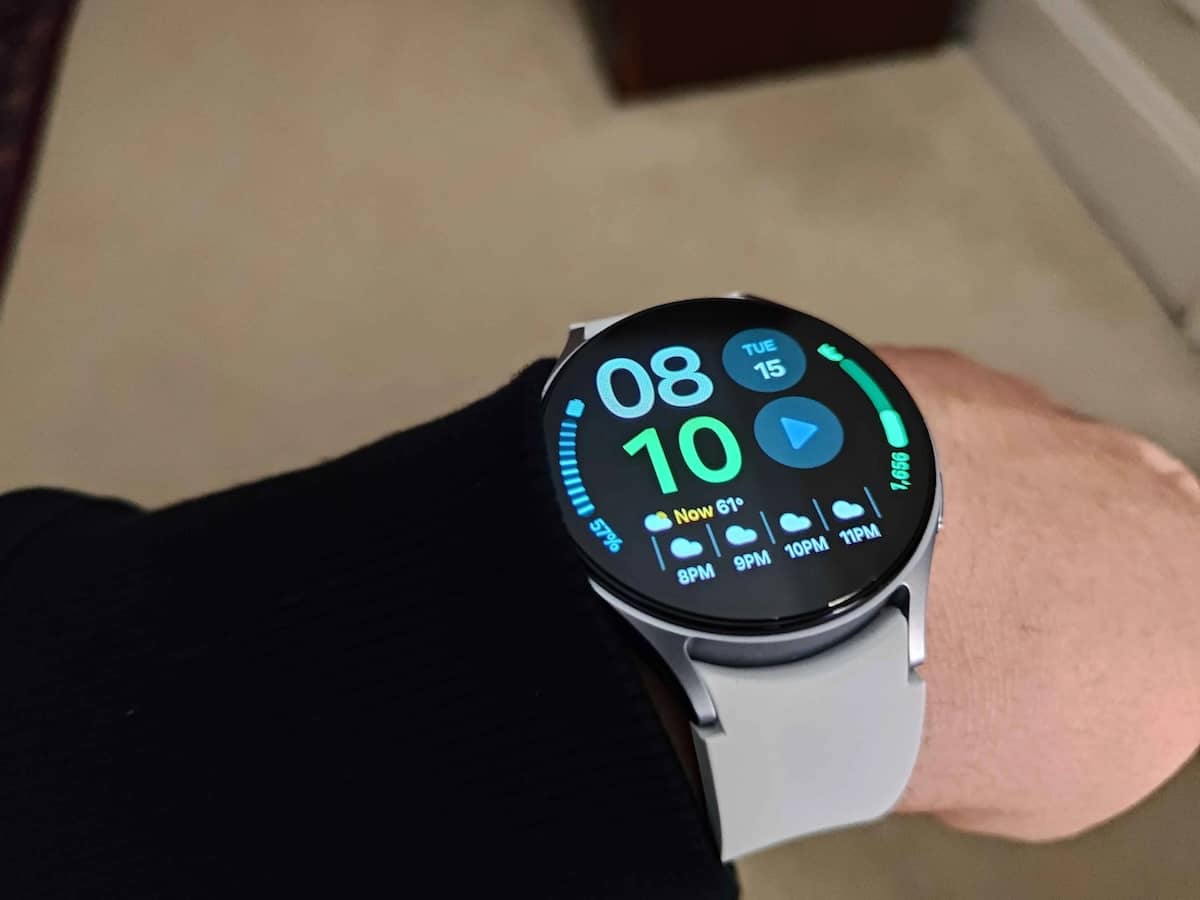
Android user perspective – If a knowledgeable buyer wants the best smartwatch for Android, their first option should always be to look at one of Samsung’s two flagship wearables. The Ultra edition received attention first, but it’s a relatively bulky device. If a more slender wrist needs a high-performance Android wearable, the Galaxy Watch 7 might be the better option. It has 5ATM water resistance, Sapphire glass protection and MIL-STD-810H titanium shock resistance, and multi GPS compatibility, including Glonass, Galileo, and Beidou, assuring international positional compliance.
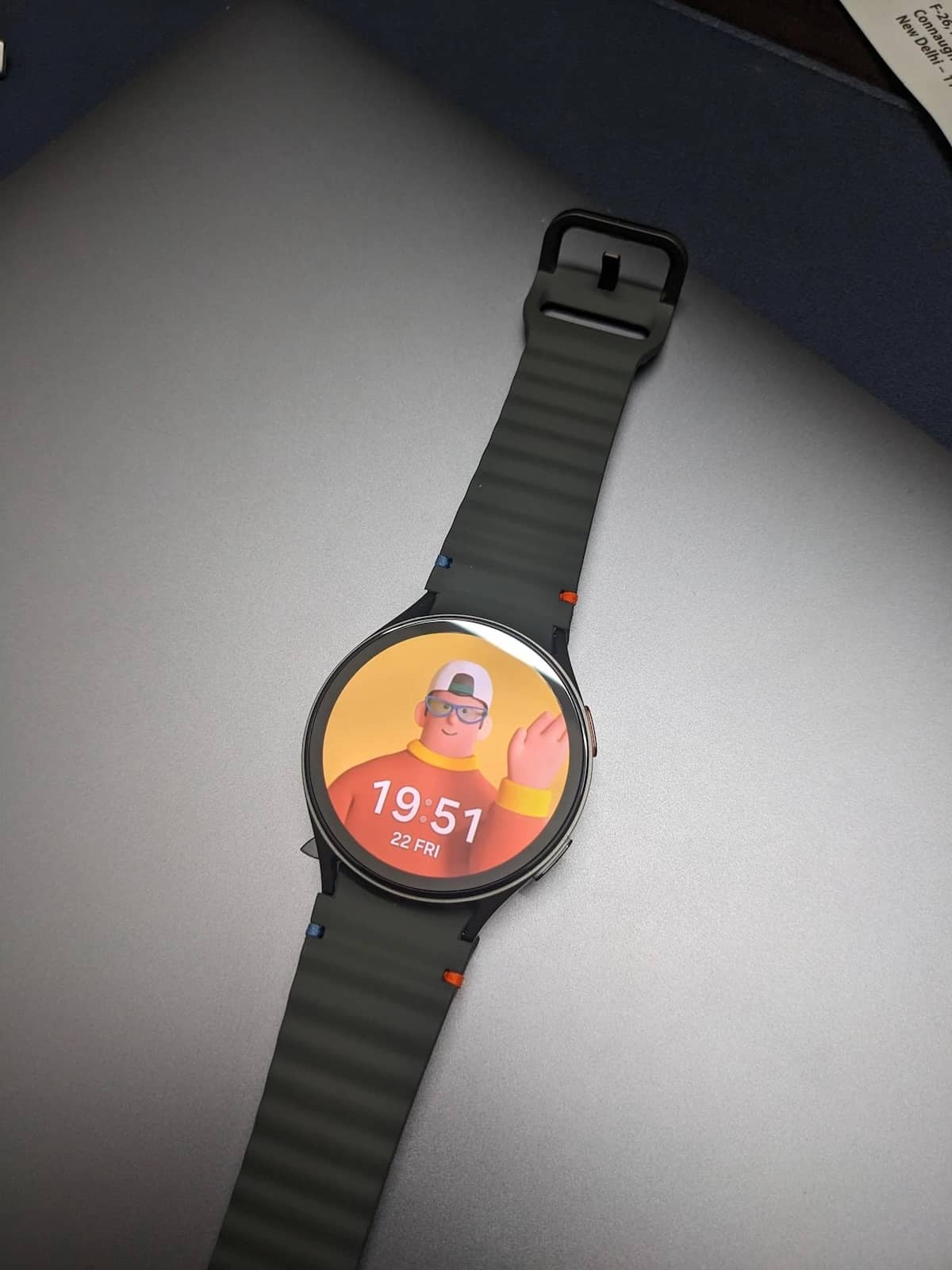
Was battery life judged to be lackluster after all of this activity? Just a little, coming in at a disappointing 22 hours, which isn’t enough to take advantage of the watch when it was called upon for sleep tracking. Nevertheless, on a good charge, sleep patterns were recorded with impressive results.
Find Your Android-Flavored Smartwatch
Samsung wearables showcase too many features to count, which is why there are two of them in this review. The Watch 7 does have a shorter battery life, but it’s easier on smaller wrists. On the other hand, the 47mm Samsung Watch Ultra is an excellent choice for rugged excursions, and it has a superior battery, offering over two days of smart traveling operation. It also has that 10ATM feature, so diving and snorkeling are both perfectly acceptable activities.

Several outliers also delivered the goods. The OnePlus Watch 2 kept right on updating our GPS location for three whole days, never glitching when swimming. The Fitbit Sense 2 closely followed, its 1.58 inch AMOLED display pulling up sensor data with slick speed. Even the Amazfit Balance drew attention, the smartwatch staying powered up for 14 days while others blinked out and demanded connection to a wall outlet. In truth, every single one of these wearables feature enough wellness and everyday lifestyle options to earn them a place of prominence on our best smartwatch for Android review.
Just be sure to get a quality band when you buy one. The included bands aren’t always comfortable, especially if you want to use the device for sleep tracking. Finally, do remember that these devices are not doctors, no matter how well they’re promoted as being accurate. Seek out a medical professional if you suspect a heart condition.
![Samsung Galaxy Watch Ultra 47mm LTE AI Smartwatch w/Energy Score, Wellness Tips, Heart Rate Tracking, Sleep Monitor, Fitness Tracker, GPS, 2024,Titanium Gray [US Version, 1Yr Manufacturer Warranty]](https://m.media-amazon.com/images/I/51LEqBkFViL._SL500_.jpg)





![SAMSUNG Galaxy Watch 7 40mm Bluetooth AI Smartwatch w/Energy Score, Wellness Tips, Heart Rate Tracking, Sleep Monitor, Fitness Tracker, 2024, Green [US Version, 1Yr Manufacturer Warranty]](https://m.media-amazon.com/images/I/41ew4GQ5kML._SL500_.jpg)
